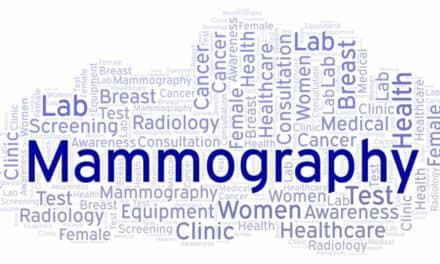
Volpara showcased a new solution designed to help radiologists address the requirement in the BI-RADS 5th Edition Atlas to provide “an overall assessment of the volume of attenuating tissues in the breast, to help indicate the relative possibility that a lesion could be obscured.” The Volpara Density Map, pending FDA clearance, presents 3D quantitative volumetric information created by the VolparaDensity algorithm in a 2D image that is available as an additional DICOM secondary capture image. For cases where the radiologist may want additional information beyond the VolparaDensity Scorecard, the Volpara Density Map provides a highly reliable and reproducible means of visually assessing which regions of dense tissue present a masking risk by showing true density in a standardized way together with quantitative metrics that provide more information on the dense tissue. The Volpara Density Map also optimizes the visual comparison of fibroglandular tissue change over time.
VolparaEnterprise, a new work-in-progress solution, provides real-time quality assurance and performance monitoring through dynamic, interactive dashboards. Designed to help facilitate the evaluation of mammography and tomosynthesis system utilization, examination times, patient dose, patient positioning, and patient comfort, VolparaEnterprise can help sites perform rapid quality control to spot issues for early intervention, optimize deployment of imaging resources based on density population demands, increase effectiveness of technologist staff, and provide objective evidence to demonstrate compliance and quality of care. VolparaEnterprise is highly intuitive and can be accessed from any browser or mobile device. It is also highly scalable from a single center with one system to a large practice or breast center with several sites with multiple mammography or breast tomosynthesis systems. VolparaEnterprise also includes new positioning metrics, including detection of nipple in profile, inframammary fold, and pectoral angle analysis. The majority of the data consolidated in the VolparaEnterprise dashboards has never before been available in an automated, customizable solution.
Volpara recently announced a new 510(k) clearance from the U.S. Food & Drug Administration (FDA) for VolparaDensity, which has been specifically designed to correlate to the Fifth Edition of the Breast Imaging-Reporting and Data System (BI-RADS) Atlas from the American College of Radiology (ACR).
At RSNA, the company showcased updates available with VolparaDensity v3.1, the first density assessment tool available clinically for use with digital breast tomosynthesis data sets from Hologic, GE, and Siemens tomosynthesis systems. Updates include configurable patient scorecards, a high-capacity server, and the ability to route patient results by Volpara’s FDA-cleared Volpara Density Grades (VDG), which are correlated to the BI-RADS density categories.
“Building on the momentum of our most recent 510(k) clearance from the FDA, we are extremely proud to showcase the industry-leading quantitative breast imaging tools here at RSNA. Featuring several new solutions designed to enhance clinical decision-making, workflow, and the early detection of breast cancer that we are showing as works in progress, we continue to strive to deliver clinically relevant solutions that help users provide the best breast care available,” said Ralph Highnam, Ph.D., Volpara Solutions CEO and chief scientist.






